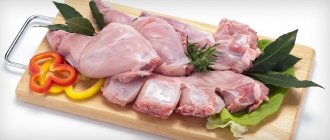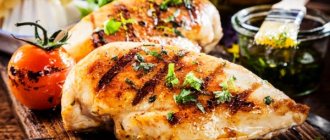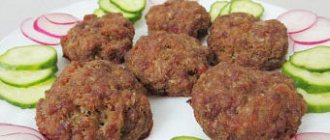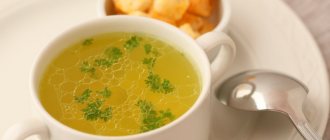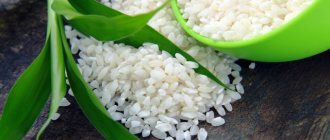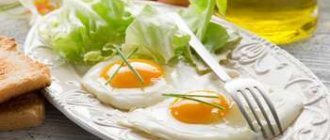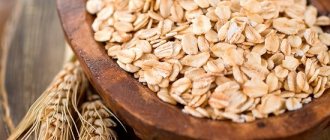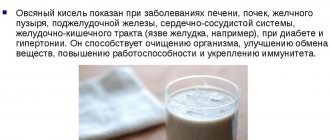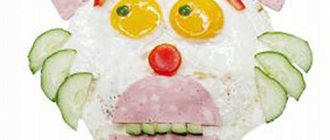If you love Georgian cuisine, then you are familiar with one of the most common dishes. Khinkali are delicious and delicious-smelling dough balls with various fillings inside, similar to Russian dumplings. The dish is prepared from a fairly stiff dough consisting of water, flour, eggs, butter and a small amount of salt. To do this, you need to mix the ingredients thoroughly and let the dough rest for about half an hour. But you can choose absolutely any filling. The calorie content of khinkali depends on its type.
“What could be better than falling in love!?
Have you tried khinkali?
“Soon the tapping of a dagger on a board was heard; this meant that they were chopping meat for khinkali,” wrote Vazhi Pshavela.
Cooking Standards
The standard cooking recipe uses ground beef or pork mixed with onions and garlic, as well as mixtures of various types of peppers. While kneading the minced meat, you need to add vegetable broth in small quantities. Then roll out the dough thinly in a layer of no more than 1 cm, cut out circles. Next, roll out flat cakes from the circles and begin to form khinkalia. Experts believe that the number of folds in the bag should be about eighteen. Afterwards, the nodules are thrown into boiling salted water and cooked for about 10 minutes. A large amount of butter and a variety of herbs are added to the finished dish.
Thus, the approximate composition of khinkali looks like this:
Average nutritional value per 100 grams. The weight of khinkali is 230 kilocalories. Almost always, various sauces are served with the dish, the use of which increases the calorie content of the food.
Read more about the calorie content of a Georgian dish
When determining the calorie content of a dish, it is necessary to take into account all the components that are used for cooking. It is worth noting that the calorie content of boiled khinkal is 20% less than in its raw form. It follows that the average nutritional value is 100 grams. Khinkali in finished form – 210 kilocalories.
One way or another, how many calories and BJU are in khinkali depends on the filling. For traditional preparation, khinkal is usually filled with meat: pork, beef or lamb (the meat is used in the form of minced meat or chopped into small pieces), but vegetable or mixed fillings are also used.
How many calories are in khinkali?
I ate 7 pieces (they were small), how many kcal is this? KHINKALI-1pcs-60g = 146 Kcal 146 * 7 = 1022 answer 1022 Kcal
In this section, only neutral information is published in topics and comments. Topics and comments containing advice, recommendations, promotion of alternative methods of treatment or other actions will be closed.
Somehow all your sentences include the word “feces”. This is not good.
Somehow all your sentences include the word “feces”. This is not good.
It's not good to see it! On the topic, the temperature of the khinkali is important, the fat content of the meat, whether there was a sauce or not, and what kind! Around 1200 I think.
New features and design have appeared for the version of the Woman.ru Forum on computers. Tell us, what are your impressions of the changes?
It's not good to see it! On the topic, the temperature of the khinkali is important, the fat content of the meat, whether there was a sauce or not, and what kind! Around 1200 I think.
For a long time, my mother-in-law was sure that we should say “khinkalia”.
Wow, 7 mantas. That's a lot, you'll get fat to absorb so much dough.
Wow, 7 mantas. That's a lot, you'll get fat to absorb so much dough.
I’ve already gained weight to be honest, but I can’t eat less, I’ll be hungry
Almost the daily norm, unfortunately. Of course, a lot depends on what kind of food you ate (cafe one, frozen another), lamb, beef, sauce, etc. but it’s still a lot of kcal.
Delay 10 days.
Who drank?
After the drug
Period
Get crazy
Pregnant at 16
Vitamins, medications, during pregnancy
Depression before childbirth
The left side of the face is numb
Tightly closed
The user of the Woman.ru website understands and accepts that he is fully responsible for all materials partially or fully published using the Woman.ru service. The user of the Woman.ru website guarantees that the placement of materials submitted by him does not violate the rights of third parties (including, but not limited to copyrights), and does not damage their honor and dignity.
The user of the Woman.ru site, by sending materials, is thereby interested in their publication on the site and expresses his consent to their further use by the owners of the Woman.ru site. All materials on the Woman.ru website, regardless of the form and date of publication on the site, can only be used with the consent of the site owners.
Use and reprinting of printed materials from the woman.ru website is possible only with an active link to the resource. The use of photographic materials is permitted only with the written consent of the site administration.
Posting intellectual property objects (photos, videos, literary works, trademarks, etc.) on the woman.ru website is permitted only to persons who have all the necessary rights for such posting.
Copyright (c) 2016-2020 Hirst Shkulev Publishing LLC
Online publication “WOMAN.RU” (Zhenshchina.RU)
Certificate of registration of mass media EL No. FS77-65950, issued by the Federal Service for Supervision of Communications, Information Technologies and Mass Communications (Roskomnadzor) on June 10, 2016. 16+
Founder: Limited Liability Company "Hirst Shkulev Publishing"
Editor-in-Chief: Voronova Yu. V.
Editorial contact information for government agencies (including Roskomnadzor):
Calorie content of Khinkali fried. Chemical composition and nutritional value.
Nutritional value and chemical composition of “Fried Khinkali”.
The table shows the nutritional content (calories, proteins, fats, carbohydrates, vitamins and minerals) per 100 grams of edible portion.
| Nutrient | Quantity | Norm** | % of the norm in 100 g | % of the norm in 100 kcal | 100% normal |
| Calorie content | 220 kcal | 1684 kcal | 13.1% | 6% | 765 g |
| Squirrels | 10 g | 76 g | 13.2% | 6% | 760 g |
| Fats | 11 g | 56 g | 19.6% | 8.9% | 509 g |
| Carbohydrates | 17 g | 219 g | 7.8% | 3.5% | 1288 g |
The energy value of fried Khinkali is 220 kcal.
Primary Source: Created in the application by the user. Read more.
** This table shows the average levels of vitamins and minerals for an adult. If you want to know the norms taking into account your gender, age and other factors, then use the “My Healthy Diet” application.
Filling for khinkali
Pork filling is the most high-calorie (240 kcal/100 g). Mixing pork with beef allows you to reduce calorie content by 10-20 kcal/100 g. Ground beef has less nutritional value, but does not allow the dish to be classified as low-calorie. Lamb or chicken filling (breast only) has the lowest energy value of the meat options - below 220 kcal/100 g.
There are many recipes for making khinkali with cheese, mushrooms or boiled vegetables. The average energy value of a dish with cheese ranges from 220-230 kcal/100 g. When using mushrooms or vegetables as a filler, the nutritional value is reduced to 200 kcal/100 grams.
How to prepare the Khinkali dish
- Mix the butter, egg and water well, add salt and flour.
- Knead the mass thoroughly.
- Let the dough rest for about 20 minutes while you prepare the minced meat.
- Grind the onion, garlic and meat, preferably in a meat grinder with a large grid. Add salt.
- Add vegetable broth to the minced meat and stir. Pour in the broth little by little and stir immediately.
- Start assembling the khinkali.
- Roll out a thick layer, about 1 centimeter thick.
- Cut out circles with a small glass, and then roll out the circles into thin flat cakes.
- Place minced meat in the middle of the flatbreads and collect the dough in a bag with folds, like an accordion.
- Throw the molded bags into boiling water and after boiling, cook for 7 - 10 minutes.
- Serve sprinkled with pepper and finely chopped dill.
- Egg - 1 pc.
- Sunflower oil - 2 tbsp.
- Salt - 2 gr.
- Ground red pepper - 2 gr.
- Wheat flour - 450 gr.
- Water - 200 gr.
- Minced pork - 950 gr.
- Onion - 1 pc.
- Garlic - 3 teeth.
- Dill - 40 gr.
- Vegetable broth - 100 gr.
Nutritional value of the Khinkali dish (per 100 grams):
Nutritionists assure: to maintain weight, it is important to count calories. But for some reason they forget to clarify what these calories should look like in terms of glasses and spoons. We took on this mission and asked a nutrition specialist to help with this difficult task.
“Yes, on the Internet you can easily find what 100 calories look like. But it turns out that this data is not accurate,” says Alisa Shabanova, development director and co-owner of GrinDin.
Calorie content of Khinkali by weight. Chemical composition and nutritional value.
Nutritional value and chemical composition of “Khinkali by weight”.
The table shows the nutritional content (calories, proteins, fats, carbohydrates, vitamins and minerals) per 100 grams of edible portion.
| Nutrient | Quantity | Norm** | % of the norm in 100 g | % of the norm in 100 kcal | 100% normal |
| Calorie content | 233.17 kcal | 1684 kcal | 13.8% | 5.9% | 722 g |
| Squirrels | 9.1 g | 76 g | 12% | 5.1% | 835 g |
| Fats | 11.64 g | 56 g | 20.8% | 8.9% | 481 g |
| Carbohydrates | 23.27 g | 219 g | 10.6% | 4.5% | 941 g |
The energy value of Khinkali by weight is 233.17 kcal.
Primary Source: Created in the application by the user. Read more.
** This table shows the average levels of vitamins and minerals for an adult. If you want to know the norms taking into account your gender, age and other factors, then use the “My Healthy Diet” application.
Calorie content of Khinkali. Chemical composition and nutritional value.
Nutritional value and chemical composition of Khinkali.
The table shows the nutritional content (calories, proteins, fats, carbohydrates, vitamins and minerals) per 100 grams of edible portion.
| Nutrient | Quantity | Norm** | % of the norm in 100 g | % of the norm in 100 kcal | 100% normal |
| Calorie content | 97.7 kcal | 1684 kcal | 5.8% | 5.9% | 1724 g |
| Squirrels | 10.6 g | 76 g | 13.9% | 14.2% | 717 g |
| Fats | 1 g | 56 g | 1.8% | 1.8% | 5600 g |
| Carbohydrates | 11.5 g | 219 g | 5.3% | 5.4% | 1904 |
| Alimentary fiber | 1 g | 20 g | 5% | 5.1% | 2000 g |
| Water | 70 g | 2273 g | 3.1% | 3.2% | 3247 g |
| Vitamins | |||||
| Vitamin A, RE | 27.5 mcg | 900 mcg | 3.1% | 3.2% | 3273 g |
| beta carotene | 0.154 mg | 5 mg | 3.1% | 3.2% | 3247 g |
| Vitamin B1, thiamine | 0.027 mg | 1.5 mg | 1.8% | 1.8% | 5556 g |
| Vitamin B2, riboflavin | 0.021 mg | 1.8 mg | 1.2% | 1.2% | 8571 g |
| Vitamin B4, choline | 11.4 mg | 500 mg | 2.3% | 2.4% | 4386 g |
| Vitamin B5, pantothenic | 0.102 mg | 5 mg | 2% | 2% | 4902 g |
| Vitamin B6, pyridoxine | 0.05 mg | 2 mg | 2.5% | 2.6% | 4000 g |
| Vitamin B9, folates | 8.586 mcg | 400 mcg | 2.1% | 2.1% | 4659 g |
| Vitamin B12, cobalamin | 0.037 mcg | 3 mcg | 1.2% | 1.2% | 8108 g |
| Vitamin C, ascorbic acid | 1.13 mg | 90 mg | 1.3% | 1.3% | 7965 g |
| Vitamin D, calciferol | 0.005 mcg | 10 mcg | 0.1% | 0.1% | 200000 g |
| Vitamin E, alpha tocopherol, TE | 0.334 mg | 15 mg | 2.2% | 2.3% | 4491 g |
| Vitamin H, biotin | 0.734 mcg | 50 mcg | 1.5% | 1.5% | 6812 g |
| Vitamin K, phylloquinone | 34 mcg | 120 mcg | 28.3% | 29% | 353 g |
| Vitamin RR, NE | 2.1748 mg | 20 mg | 10.9% | 11.2% | 920 g |
| Macronutrients | |||||
| Potassium, K | 48.8 mg | 2500 mg | 2% | 2% | 5123 g |
| Calcium, Ca | 23.52 mg | 1000 mg | 2.4% | 2.5% | 4252 g |
| Silicon, Si | 0.689 mg | 30 mg | 2.3% | 2.4% | 4354 g |
| Magnesium, Mg | 7.53 mg | 400 mg | 1.9% | 1.9% | 5312 g |
| Sodium, Na | 170.88 mg | 1300 mg | 13.1% | 13.4% | 761 g |
| Sera, S | 113.93 mg | 1000 mg | 11.4% | 11.7% | 878 g |
| Phosphorus, Ph | 27.5 mg | 800 mg | 3.4% | 3.5% | 2909 g |
| Chlorine, Cl | 270.3 mg | 2300 mg | 11.8% | 12.1% | 851 g |
| Microelements | |||||
| Bor, B | 25.7 mcg | ~ | |||
| Vanadium, V | 15.51 mcg | ~ | |||
| Iron, Fe | 0.335 mg | 18 mg | 1.9% | 1.9% | 5373 g |
| Yod, I | 4.39 mcg | 150 mcg | 2.9% | 3% | 3417 g |
| Cobalt, Co | 0.896 mcg | 10 mcg | 9% | 9.2% | 1116 g |
| Manganese, Mn | 0.14 mg | 2 mg | 7% | 7.2% | 1429 g |
| Copper, Cu | 32.52 mcg | 1000 mcg | 3.3% | 3.4% | 3075 g |
| Molybdenum, Mo | 3.082 mcg | 70 mcg | 4.4% | 4.5% | 2271 g |
| Selenium, Se | 1.22 mcg | 55 mcg | 2.2% | 2.3% | 4508 g |
| Fluorine, F | 18.81 mcg | 4000 mcg | 0.5% | 0.5% | 21265 g |
| Chromium, Cr | 0.75 mcg | 50 mcg | 1.5% | 1.5% | 6667 g |
| Zinc, Zn | 0.2747 mg | 12 mg | 2.3% | 2.4% | 4368 g |
| Sterols (sterols) | |||||
| Cholesterol | 0.7 mg | max 300 mg |
The energy value of Khinkali is 97.7 kcal.
Primary Source: Created in the application by the user. Read more.
** This table shows the average levels of vitamins and minerals for an adult. If you want to know the norms taking into account your gender, age and other factors, then use the “My Healthy Diet” application.
Calorie content of Khinkali 25 g - 1 pc. Chemical composition and nutritional value.
Nutritional value and chemical composition of “Khinkali 25 g-1 piece”.
The table shows the nutritional content (calories, proteins, fats, carbohydrates, vitamins and minerals) per 100 grams of edible portion.
| Nutrient | Quantity | Norm** | % of the norm in 100 g | % of the norm in 100 kcal | 100% normal |
| Calorie content | 262 kcal | 1684 kcal | 15.6% | 6% | 643 g |
| Squirrels | 8 g | 76 g | 10.5% | 4% | 950 g |
| Fats | 28 g | 56 g | 50% | 19.1% | 200 g |
| Carbohydrates | 15 g | 219 g | 6.8% | 2.6% | 1460 g |
| Organic acids | 41.4 g | ~ | |||
| Alimentary fiber | 2.4 g | 20 g | 12% | 4.6% | 833 g |
| Water | 55.7 g | 2273 g | 2.5% | 1% | 4081 g |
| Ash | 0.6 g | ~ | |||
| Vitamins | |||||
| Vitamin A, RE | 600 mcg | 900 mcg | 66.7% | 25.5% | 150 g |
| Retinol | 0.6 mg | ~ | |||
| Vitamin B1, thiamine | 0.06 mg | 1.5 mg | 4% | 1.5% | 2500 g |
| Vitamin B2, riboflavin | 0.05 mg | 1.8 mg | 2.8% | 1.1% | 3600 g |
| Vitamin B4, choline | 11.8 mg | 500 mg | 2.4% | 0.9% | 4237 g |
| Vitamin B5, pantothenic | 0.2 mg | 5 mg | 4% | 1.5% | 2500 g |
| Vitamin B6, pyridoxine | 0.1 mg | 2 mg | 5% | 1.9% | 2000 g |
| Vitamin B9, folates | 12.9 mcg | 400 mcg | 3.2% | 1.2% | 3101 g |
| Vitamin C, ascorbic acid | 2.6 mg | 90 mg | 2.9% | 1.1% | 3462 g |
| Vitamin E, alpha tocopherol, TE | 0.6 mg | 15 mg | 4% | 1.5% | 2500 g |
| Vitamin H, biotin | 0.6 mcg | 50 mcg | 1.2% | 0.5% | 8333 g |
| Vitamin RR, NE | 0.998 mg | 20 mg | 5% | 1.9% | 2004 |
| Niacin | 0.5 mg | ~ | |||
| Macronutrients | |||||
| Potassium, K | 141.8 mg | 2500 mg | 5.7% | 2.2% | 1763 |
| Calcium, Ca | 22.8 mg | 1000 mg | 2.3% | 0.9% | 4386 g |
| Silicon, Si | 0.9 mg | 30 mg | 3% | 1.1% | 3333 g |
| Magnesium, Mg | 11.4 mg | 400 mg | 2.9% | 1.1% | 3509 g |
| Sodium, Na | 8.5 mg | 1300 mg | 0.7% | 0.3% | 15294 g |
| Sera, S | 33.3 mg | 1000 mg | 3.3% | 1.3% | 3003 g |
| Phosphorus, P | 36.9 mg | 800 mg | 4.6% | 1.8% | 2168 g |
| Chlorine, Cl | 652.6 mg | 2300 mg | 28.4% | 10.8% | 352 g |
| Microelements | |||||
| Aluminium, Al | 283.7 mcg | ~ | |||
| Bor, B | 30.8 mcg | ~ | |||
| Vanadium, V | 20.5 mcg | ~ | |||
| Iron, Fe | 0.6 mg | 18 mg | 3.3% | 1.3% | 3000 g |
| Yod, I | 1.1 mcg | 150 mcg | 0.7% | 0.3% | 13636 g |
| Cobalt, Co | 1.5 mcg | 10 mcg | 15% | 5.7% | 667 g |
| Manganese, Mn | 0.1762 mg | 2 mg | 8.8% | 3.4% | 1135 g |
| Copper, Cu | 116.6 mcg | 1000 mcg | 11.7% | 4.5% | 858 g |
| Molybdenum, Mo | 4 mcg | 70 mcg | 5.7% | 2.2% | 1750 g |
| Nickel, Ni | 0.8 mcg | ~ | |||
| Tin, Sn | 1.2 mcg | ~ | |||
| Rubidium, Rb | 53.3 mcg | ~ | |||
| Selenium, Se | 1.4 mcg | 55 mcg | 2.5% | 1% | 3929 g |
| Titanium, Ti | 2.5 mcg | ~ | |||
| Fluorine, F | 47.4 mcg | 4000 mcg | 1.2% | 0.5% | 8439 g |
| Chromium, Cr | 0.7 mcg | 50 mcg | 1.4% | 0.5% | 7143 g |
| Zinc, Zn | 0.3695 mg | 12 mg | 3.1% | 1.2% | 3248 g |
| Digestible carbohydrates | |||||
| Starch and dextrins | 15.5 g | ~ | |||
| Mono- and disaccharides (sugars) | 3.1 g | max 100 g |
The energy value of Khinkali 25 g-1 piece is 262 kcal.
Primary Source: Created in the application by the user. Read more.
** This table shows the average levels of vitamins and minerals for an adult. If you want to know the norms taking into account your gender, age and other factors, then use the “My Healthy Diet” application.
Sweets
They say: 4 tsp. strawberry jam.
Actually: True. The average calorie content of jam is 250−300 kcal, respectively, 4 tsp. − this is 20 g of jam, approximately 100 kcal.
They say: 25 M&M's.
Actually: False. The weight of 1 chocolate dragee is a little more than 1 g, and with peanuts even more - 2.4 g. At the same time, the calorie content of ordinary chocolate dragees is 470 kcal, 25 g is 117 kcal, but 24 pieces with peanuts is almost 60 g and about 300 kcal.
They say: 1 baked apple with honey and cinnamon.
Actually: True! But keep in mind that it all depends on the amount of honey. In order not to exceed 100 kcal, you need to take no more than 1 tablespoon (10 g) of honey. The calorie content of 1 apple (medium, weighing 150 g) is 70 kcal, and 1 tsp. honey - 16 kcal.
Calorie content of Khinkali from grandmother Katya (1 piece = 46 g). Chemical composition and nutritional value.
Nutritional value and chemical composition of “Khinkali from Grandma Katya (1 piece = 46 g).”
The table shows the nutritional content (calories, proteins, fats, carbohydrates, vitamins and minerals) per 100 grams of edible portion.
| Nutrient | Quantity | Norm** | % of the norm in 100 g | % of the norm in 100 kcal | 100% normal |
| Calorie content | 218 kcal | 1684 kcal | 12.9% | 5.9% | 772 g |
| Squirrels | 10.68 g | 76 g | 14.1% | 6.5% | 712 g |
| Fats | 17.8 g | 56 g | 31.8% | 14.6% | 315 g |
The energy value of Khinkali from grandmother Katya (1 piece = 46 g) is 218 kcal.
Primary Source: Created in the application by the user. Read more.
** This table shows the average levels of vitamins and minerals for an adult. If you want to know the norms taking into account your gender, age and other factors, then use the “My Healthy Diet” application.
Micro- and macroelements in Khinkal Soup (soup with meat and shells - Dagestan national dish)
Soup “Khinkal” (soup with meat and shells is a Dagestan national dish) contains the following elements: Mono- and disaccharides, Cholesterol, Ash, Starch, Water, Organic acids, Dietary fiber, Unsaturated fatty acids, Sodium, Potassium, Phosphorus, Magnesium, Calcium, Sulfur, Copper, Boron, Silicon, Aluminum, Titanium, Iodine, Manganese, Chromium, Fluorine, Molybdenum, Vanadium, Cobalt, Nickel, Rubidium, Selenium, Lithium, Tin, Zinc, Iron, Chlorine.
| Micro and macro element | Meaning |
| Mono- and disaccharides, g. | 0,3 |
| Cholesterol, mg | 4,3 |
| Zola, Mr. | 0,6 |
| Starch, Mr. | 6,9 |
| Water, city | 110,3 |
| Organic acids, g. | 6,2 |
| Dietary fiber, g. | 0,2 |
| Unsaturated fatty acids, g | 0,02 |
| Sodium, mg | 90 |
| Potassium, mg | 135,4 |
| Phosphorus, mg | 97,4 |
| Magnesium, mg | 11,7 |
| Calcium, mg | 13,5 |
| Sulfur, mg | 69,3 |
| Copper, µg | 62 |
| Boron, µg | 5,6 |
| Silicon, mg | 0,4 |
| Aluminum, µg | 109,4 |
| Titanium, µg | 1,1 |
| Iodine, mcg | 3,8 |
| Manganese, mg | 0,0764 |
| Chromium, µg | 2,4 |
| Fluorine, mcg | 20,3 |
| Molybdenum, mcg | 5,1 |
| Vanadium, mcg | 9,6 |
| Cobalt, µg | 2,2 |
| Nickel, µg | 2,5 |
| Rubidium, mcg | 2 |
| Selenium, mcg | 0,6 |
| Lithium, mcg | 0,03 |
| Tin, µg | 20,3 |
| Zinc, mg | 0,954 |
| Iron, mg | 1,4 |
| Chlorine, mg | 214,4 |
Khinkali recipe. Calorie, chemical composition and nutritional value.
| Nutrient | Quantity | Norm** | % of the norm in 100 g | % of the norm in 100 kcal | 100% normal |
| Calorie content | 265 kcal | 1684 kcal | 15.7% | 5.9% | 635 g |
| Squirrels | 9.1 g | 76 g | 12% | 4.5% | 835 g |
| Fats | 10.7 g | 56 g | 19.1% | 7.2% | 523 g |
| Carbohydrates | 35.2 g | 219 g | 16.1% | 6.1% | 622 g |
| Organic acids | 37.8 g | ~ | |||
| Alimentary fiber | 1.6 g | 20 g | 8% | 3% | 1250 g |
| Water | 43.6 g | 2273 g | 1.9% | 0.7% | 5213 g |
| Ash | 0.801 g | ~ | |||
| Vitamins | |||||
| Vitamin A, RE | 103.3 mcg | 900 mcg | 11.5% | 4.3% | 871 g |
| Retinol | 0.013 mg | ~ | |||
| beta carotene | 0.57 mg | 5 mg | 11.4% | 4.3% | 877 g |
| Vitamin B1, thiamine | 0.194 mg | 1.5 mg | 12.9% | 4.9% | 773 g |
| Vitamin B2, riboflavin | 0.099 mg | 1.8 mg | 5.5% | 2.1% | 1818 |
| Vitamin B4, choline | 49.36 mg | 500 mg | 9.9% | 3.7% | 1013 g |
| Vitamin B5, pantothenic | 0.347 mg | 5 mg | 6.9% | 2.6% | 1441 g |
| Vitamin B6, pyridoxine | 0.174 mg | 2 mg | 8.7% | 3.3% | 1149 g |
| Vitamin B9, folates | 16.878 mcg | 400 mcg | 4.2% | 1.6% | 2370 g |
| Vitamin B12, cobalamin | 0.027 mcg | 3 mcg | 0.9% | 0.3% | 11111 g |
| Vitamin C, ascorbic acid | 6.17 mg | 90 mg | 6.9% | 2.6% | 1459 g |
| Vitamin D, calciferol | 0.133 mcg | 10 mcg | 1.3% | 0.5% | 7519 g |
| Vitamin E, alpha tocopherol, TE | 1.605 mg | 15 mg | 10.7% | 4% | 935 g |
| Vitamin H, biotin | 1.994 mcg | 50 mcg | 4% | 1.5% | 2508 g |
| Vitamin K, phylloquinone | 8.2 mcg | 120 mcg | 6.8% | 2.6% | 1463 g |
| Vitamin RR, NE | 2.9746 mg | 20 mg | 14.9% | 5.6% | 672 g |
| Niacin | 1.235 mg | ~ | |||
| Macronutrients | |||||
| Potassium, K | 187.54 mg | 2500 mg | 7.5% | 2.8% | 1333 g |
| Calcium, Ca | 47.51 mg | 1000 mg | 4.8% | 1.8% | 2105 g |
| Silicon, Si | 1.928 mg | 30 mg | 6.4% | 2.4% | 1556 g |
| Magnesium, Mg | 23.6 mg | 400 mg | 5.9% | 2.2% | 1695 g |
| Sodium, Na | 33.89 mg | 1300 mg | 2.6% | 1% | 3836 g |
| Sera, S | 51.57 mg | 1000 mg | 5.2% | 2% | 1939 |
| Phosphorus, Ph | 102.4 mg | 800 mg | 12.8% | 4.8% | 781 g |
| Chlorine, Cl | 606.34 mg | 2300 mg | 26.4% | 10% | 379 g |
| Microelements | |||||
| Aluminium, Al | 518.7 mcg | ~ | |||
| Bor, B | 33.9 mcg | ~ | |||
| Vanadium, V | 41.64 mcg | ~ | |||
| Iron, Fe | 1.34 mg | 18 mg | 7.4% | 2.8% | 1343 g |
| Yod, I | 2.06 mcg | 150 mcg | 1.4% | 0.5% | 7282 g |
| Cobalt, Co | 2.19 mcg | 10 mcg | 21.9% | 8.3% | 457 g |
| Lithium, Li | 0.16 mcg | ~ | |||
| Manganese, Mn | 0.3833 mg | 2 mg | 19.2% | 7.2% | 522 g |
| Copper, Cu | 78.44 mcg | 1000 mcg | 7.8% | 2.9% | 1275 g |
| Molybdenum, Mo | 7.197 mcg | 70 mcg | 10.3% | 3.9% | 973 g |
| Nickel, Ni | 1.706 mcg | ~ | |||
| Tin, Sn | 21.08 mcg | ~ | |||
| Rubidium, Rb | 40.5 mcg | ~ | |||
| Selenium, Se | 3.05 mcg | 55 mcg | 5.5% | 2.1% | 1803 |
| Strontium, Sr | 6.4 mcg | ~ | |||
| Titanium, Ti | 5 mcg | ~ | |||
| Fluorine, F | 19.87 mcg | 4000 mcg | 0.5% | 0.2% | 20131 |
| Chromium, Cr | 2.99 mcg | 50 mcg | 6% | 2.3% | 1672 g |
| Zinc, Zn | 0.5645 mg | 12 mg | 4.7% | 1.8% | 2126 g |
| Digestible carbohydrates | |||||
| Starch and dextrins | 30.821 g | ~ | |||
| Mono- and disaccharides (sugars) | 2.3 g | max 100 g | |||
| Glucose (dextrose) | 0.108 g | ~ | |||
| Sucrose | 0.542 g | ~ | |||
| Fructose | 0.1 g | ~ | |||
| Essential amino acids | 0.024 g | ~ | |||
| Arginine* | 0.22 g | ~ | |||
| Valin | 0.194 g | ~ | |||
| Histidine* | 0.135 g | ~ | |||
| Isoleucine | 0.17 g | ~ | |||
| Leucine | 0.262 g | ~ | |||
| Lysine | 0.292 g | ~ | |||
| Methionine | 0.082 g | ~ | |||
| Methionine + Cysteine | 0.125 g | ~ | |||
| Threonine | 0.159 g | ~ | |||
| Tryptophan | 0.046 g | ~ | |||
| Phenylalanine | 0.139 g | ~ | |||
| Phenylalanine+Tyrosine | 0.263 g | ~ | |||
| Nonessential amino acids | 0.055 g | ~ | |||
| Alanin | 0.187 g | ~ | |||
| Aspartic acid | 0.311 g | ~ | |||
| Hydroxyproline | 0.041 g | ~ | |||
| Glycine | 0.168 g | ~ | |||
| Glutamic acid | 0.534 g | ~ | |||
| Proline | 0.168 g | ~ | |||
| Serin | 0.146 g | ~ | |||
| Tyrosine | 0.124 g | ~ | |||
| Cysteine | 0.043 g | ~ | |||
| Sterols (sterols) | |||||
| Cholesterol | 43.57 mg | max 300 mg | |||
| Saturated fatty acids | |||||
| Saturated fatty acids | 3.4 g | max 18.7 g | |||
| 14:0 Miristinovaya | 0.123 g | ~ | |||
| 15:0 Pentadecane | 0.006 g | ~ | |||
| 16:0 Palmitinaya | 2.105 g | ~ | |||
| 17:0 Margarine | 0.033 g | ~ | |||
| 18:0 Stearic | 1.114 g | ~ | |||
| Monounsaturated fatty acids | 4.398 g | min 16.8 g | 26.2% | 9.9% | |
| 14:1 Myristoleic | 0.003 g | ~ | |||
| 16:1 Palmitoleic | 0.318 g | ~ | |||
| 18:1 Oleic (omega-9) | 3.941 g | ~ | |||
| Polyunsaturated fatty acids | 1.048 g | from 11.2 to 20.6 g | 9.4% | 3.5% | |
| 18:2 Linolevaya | 0.945 g | ~ | |||
| 18:3 Linolenic | 0.063 g | ~ | |||
| 20:4 Arachidonic | 0.039 g | ~ | |||
| Omega-3 fatty acids | 0.1 g | from 0.9 to 3.7 g | 11.1% | 4.2% | |
| Omega-6 fatty acids | 1 g | from 4.7 to 16.8 g | 21.3% | 8% |
Dairy
They say: 1 glass of 3% kefir
In fact: Exactly right!
They say: 1 tablespoon sour cream 42%
Not really. 1 tablespoon is about 10 g. The calorie content of 40% sour cream is approximately 400 kcal, that is, 10 g is 40 kcal.
They say: 1 tablespoon of condensed milk
Not really. The calorie content of condensed milk is 320 kcal per 100 g, that is, in 1 tbsp. l. - 10 g, which is only 32 kcal.
They say: 2 palms of low-fat cottage cheese
Actually: No comment. Who measures cottage cheese with their palms?
Khinkali with meat
In Georgia, meat is mainly used to prepare khinkali. As a rule, it is pork or beef, and sometimes lamb. To determine the calorie content of khinkali, you must first clarify the composition according to the recipe.
Typically the following ingredients are used for preparation:
- meat (beef, pork or a mixture of both);
- bulb onions;
- lard;
- Bell pepper;
- drinking water;
- garlic;
- milk protein;
- wheat flour;
- vegetable fiber;
- table salt;
- chicken egg;
- spices (black pepper and suneli hops);
- vegetable oil.
As a result, the energy value of 100 grams of khinkali prepared from such components is 220 kilocalories. But here we must take into account that in this case we are talking about a raw product. According to the calculation rules, for cooked products the final energy value is determined by multiplying this amount by a factor of 0.8. It turns out that the calorie content of khinkali will ultimately be 20 percent lower. That is, 100 grams of boiled product will already contain 176 kilocalories.
Calorie content of different types of khinkali
The traditional recipe for making khinkali included dough and wild goat meat, but today such meat is difficult to obtain, so other types of meat are used, but most often you can hear the question of how many calories are in khinkali made from beef and pork - a combination that is ideal in this case. The calorie content of pork khinkali is the highest, amounting to about 240 kcal per 100 grams. With the addition of beef, you can reduce the calorie content of the dish by 20-30 kilocalories, while the calorie content of khinkali with beef is slightly lower, although it is also difficult to call such a dish low-calorie.
If we talk about the calorie content of khinkali with meat, you need to clarify what kind of meat you prefer to cook it from. Georgians love lamb very much, so many want to know what the calorie content of khinkali with lamb is. Considering that lamb is one of the lowest calorie types of meat, 100 grams of lamb khinkali contains less than 220 kcal. At the same time, the calorie content of khinkali with chicken is approximately the same, but we must remember that chicken breast is considered dietary, but not the skin or red meat.
Khinkali is most often boiled in a large amount of water, so housewives who are worried about the health of the family are concerned about the question of how many calories are in boiled khinkali. And it is definitely difficult to answer this question, as well as to understand how many calories are in steamed khinkali, because it depends to a large extent on the composition of the minced meat. The calorie content of boiled khinkali with meat is much lower than the calorie content of khinkali with mushrooms (there is such a recipe), but we would like to consider another type of dish, which is prepared with cheese. The calorie content of khinkali with cheese also lies in the range of 220-230 kcal per 100 grams, however, this is relative, since the fat content of the cheese must be taken into account, although if you want to feel the taste of real Georgian khinkali, try to make them according to the classic recipe - with the addition of minced meat or chopped meat.
Information about how many calories khinkali product , as well as the content of proteins, fats and carbohydrates.
Calorie content of khinkali - 234.6 kcal
Khinkali protein – 11.1 g
Khinkali fat – 12.8 g
Khinkali carbohydrates - 18.4 g
Calculations per 100 g of product
Other mass required:
Search the product database (enter the name of the product, e.g. “milk”)
If you love Georgian cuisine, then you are familiar with one of the most common dishes. Khinkali are delicious and delicious-smelling dough balls with various fillings inside, similar to Russian dumplings. The dish is prepared from a fairly stiff dough consisting of water, flour, eggs, butter and a small amount of salt. To do this, you need to mix the ingredients thoroughly and let the dough rest for about half an hour. But you can choose absolutely any filling. The calorie content of khinkali depends on its type.
“What could be better than falling in love!?
Have you tried khinkali?
“Soon the tapping of a dagger on a board was heard; this meant that they were chopping meat for khinkali,” wrote Vazhi Pshavela.
Calorie content of khinkali
If you love Georgian cuisine, then you are familiar with one of the most common dishes. Khinkali are delicious and delicious-smelling dough balls with various fillings inside, similar to Russian dumplings. The dish is prepared from a fairly stiff dough consisting of water, flour, eggs, butter and a small amount of salt. To do this, you need to mix the ingredients thoroughly and let the dough rest for about half an hour. But you can choose absolutely any filling. The calorie content of khinkali depends on its type.
“What could be better than falling in love!?
Have you tried khinkali?
“Soon the tapping of a dagger on a board was heard; this meant that they were chopping meat for khinkali,” wrote Vazhi Pshavela.
Cooking Standards
The standard cooking recipe uses ground beef or pork mixed with onions and garlic, as well as mixtures of various types of peppers. While kneading the minced meat, you need to add vegetable broth in small quantities. Then roll out the dough thinly in a layer of no more than 1 cm, cut out circles. Next, roll out flat cakes from the circles and begin to form khinkalia. Experts believe that the number of folds in the bag should be about eighteen. Afterwards, the nodules are thrown into boiling salted water and cooked for about 10 minutes. A large amount of butter and a variety of herbs are added to the finished dish.
Thus, the approximate composition of khinkali looks like this:
| Ingredient | Weight, g | Proteins, g | Fats, gr | Carbohydrates, g | Calories, kcal |
| chicken egg – 1 pc. | 47 | 5.97 | 5.12 | 0.33 | 73.79 |
| Sunflower oil – 2 tbsp. | 34 | 0 | 33.97 | 0 | 305.66 |
| salt - a pinch | 2 | 0 | 0 | 0 | 0 |
| pepper mixture - a pinch | 2 | 0.01 | 0.01 | 0.09 | 0.42 |
| wheat flour – 2 cups | 450 | 41.4 | 5.4 | 337.05 | 1539 |
| water – 1 glass | 200 | 0 | 0 | 0 | 0 |
| minced beef – 0.5 kg | 500 | 90 | 75 | 0 | 1075 |
| pork – 0.5 kg | 500 | 80 | 98,3 | 0 | 1249 |
| onion – 1 pc. | 75 | 1.05 | 0 | 7.8 | 30.75 |
| garlic – 3 cloves | 12 | 0.78 | 0.06 | 3.59 | 17.16 |
| dill - bunch | 40 | 1 | 0.2 | 2.52 | 15.2 |
| bouillon | 100 | 0.2 | 0.1 | 0.9 | 5 |
| Total | 1962 | 220,41 | 218,6 | 352,28 | 4310,98 |
Average nutritional value per 100 grams. The weight of khinkali is 230 kilocalories. Almost always, various sauces are served with the dish, the use of which increases the calorie content of the food.
Read more about the calorie content of a Georgian dish
When determining the calorie content of a dish, it is necessary to take into account all the components that are used for cooking. It is worth noting that the calorie content of boiled khinkal is 20% less than in its raw form. It follows that the average nutritional value is 100 grams. Khinkali in finished form – 210 kilocalories.
One way or another, how many calories and BJU are in khinkali depends on the filling. For traditional preparation, khinkal is usually filled with meat: pork, beef or lamb (the meat is used in the form of minced meat or chopped into small pieces), but vegetable or mixed fillings are also used.
Filling for khinkali
Pork filling is the most high-calorie (240 kcal/100 g). Mixing pork with beef allows you to reduce calorie content by 10-20 kcal/100 g. Ground beef has less nutritional value, but does not allow the dish to be classified as low-calorie. Lamb or chicken filling (breast only) has the lowest energy value of the meat options - below 220 kcal/100 g.
There are many recipes for making khinkali with cheese, mushrooms or boiled vegetables. The average energy value of a dish with cheese ranges from 220-230 kcal/100 g. When using mushrooms or vegetables as a filler, the nutritional value is reduced to 200 kcal/100 grams.
The nutritional value of khinkali in any version is quite high and it is not recommended to include them in the diet, because one piece weighs about 80 grams, which is approximately 185 kilocalories. No one is limited to one piece, which means a serving of five pieces will have a value of about 1000 kcal, which is almost 40 percent of the daily needs of the average person.
In Georgia, khinkali is prepared in completely different sizes, ranging from half a dumpling to the size of a soup bowl. They use a variety of fillings and spices. Try preparing khinkali according to different recipes - after all, each of them has its own zest, which makes them unusual, but no less tasty.
We recommend viewing
What kind of spice is nutmeg?
Nutmeg was first used as a spicy addition to food about five thousand years ago. In the 15th century, Arab merchants brought it to Europe.
Appearance, taste and aroma
This spice is the fruit of the evergreen nutmeg tree, which grows in the Moluccas Islands.
Mature trees have a height of up to 12 meters. After flowering, in place of the flowers, drupe-like fruits are formed, the length of which is about 9 cm. They are surrounded by a fleshy yellow pericarp. From each tree you can collect 1.5-2 thousand fruits.
The spice has a pungent taste and a spicy aroma with woody undertones. After eating dishes with nutmeg, a pleasant aftertaste with notes of cardamom and cinnamon remains.
How is the spice produced?
After harvesting the fruits, the process of obtaining the finished spice lasts about four months. The fruits are removed from the pericarp and dried on bamboo racks in a room with a fire that does not produce smoke for 1-2 months.
During the drying process, they are stirred regularly using a wooden rake. After the fruits have dried, they are broken with a hammer and the kernels are removed. The cleaned kernels are immersed in a mixture of coral limestone and sea water, and then dried for 1-3 weeks.
The nutritional value
Muscat has many beneficial properties. Therefore, it is not at all surprising that it has become so popular all over the world.
100 g contains 50 g of fat, 7.3 g of carbohydrates and 20 g of protein.
100 g of nutmeg contains 525 kcal. However, it will not be able to greatly increase the calorie content of dishes, since due to its tart taste and aroma it is used in small quantities.
Nutmeg contains essential oils, a large amount of vitamins and minerals.
The spice is made from the fruit of Myristica fragrans, which is common in the tropical forests of the Old World.
Calorie content of boiled Olympus khinkali 1 pc. Chemical composition and nutritional value.
Nutritional value and chemical composition of “Olympus boiled khinkali 1 pc.”
The table shows the nutritional content (calories, proteins, fats, carbohydrates, vitamins and minerals) per 100 grams of edible portion.
| Nutrient | Quantity | Norm** | % of the norm in 100 g | % of the norm in 100 kcal | 100% normal |
| Calorie content | 246 kcal | 1684 kcal | 14.6% | 5.9% | 685 g |
| Squirrels | 10 g | 76 g | 13.2% | 5.4% | 760 g |
| Fats | 12 g | 56 g | 21.4% | 8.7% | 467 g |
| Carbohydrates | 24.7 g | 219 g | 11.3% | 4.6% | 887 g |
The energy value of boiled Olympus khinkali 1 piece is 246 kcal.
Primary Source: Created in the application by the user. Read more.
** This table shows the average levels of vitamins and minerals for an adult. If you want to know the norms taking into account your gender, age and other factors, then use the “My Healthy Diet” application.
Georgian khinkali recipe and their calorie content
Good day, dear friends of the “Lose Weight Diet” project!
Today we will look at the recipe for Georgian khinkali - a traditional Caucasian dish, in appearance partly reminiscent of Uzbek manti. But the taste of khinkali, which is quite high in calories, is much closer to homemade dumplings. Below we publish for those who want to prepare Georgian khinkali, a recipe with photos designed to help beginners master the art of sculpting “Caucasian dumplings.”
Calorie content of Khinkali with beef. Chemical composition and nutritional value.
Nutritional value and chemical composition of “Khinkali with beef”.
The table shows the nutritional content (calories, proteins, fats, carbohydrates, vitamins and minerals) per 100 grams of edible portion.
| Nutrient | Quantity | Norm** | % of the norm in 100 g | % of the norm in 100 kcal | 100% normal |
| Calorie content | 160 kcal | 1684 kcal | 9.5% | 5.9% | 1053 g |
| Squirrels | 10 g | 76 g | 13.2% | 8.3% | 760 g |
| Fats | 4 g | 56 g | 7.1% | 4.4% | 1400 g |
| Carbohydrates | 22 g | 219 g | 10% | 6.3% | 995 g |
The energy value of Khinkali with beef is 160 kcal.
Primary Source: Created in the application by the user. Read more.
** This table shows the average levels of vitamins and minerals for an adult. If you want to know the norms taking into account your gender, age and other factors, then use the “My Healthy Diet” application.
Dietary properties:
How many calories are in khinkali, what kind of dish it is, how to prepare it, all this is of great interest to those who lead a healthy lifestyle and monitor their health and figure. So we will try to answer these questions in the following article.
So:
Khinkali is a national dish of Georgian cuisine, reminiscent of Russian dumplings, but with many differences from them. Traditionally, the filling for them was made from chopped lamb with the addition of onions, spices and herbs. These days, a mixture of beef and pork can be used instead of lamb. Their size is usually much larger than dumplings. The filling is laid out on a fairly large circle of thinly rolled unleavened dough, then the edges of the dough are gathered up to form a “bag”.
For a long time, the culinary skill of the housewife was determined by the number of folds that were laid on this “dumpling” - the more there are, the better. Finished products are boiled in salted water or steamed. Its upper part is intended to be grasped by hand.
How many calories are in boiled khinkali?
The excellent combination of dough and meat is used by chefs and housewives in many countries to prepare their culinary recipes. In China and Russia they prepare dumplings, a traditional dish of Ukrainian cuisine is dumplings with meat, Uzbeks prepare manti, and Georgians cannot live without khinkali, which can be called part of the national culture. Georgian housewives prepare them every day; khinkali are also a decoration for a noisy Caucasian feast, and they are not only tasty, but also healthy. Georgian cuisine, as you know, is not the most dietary, which is why the question of how many calories are in khinkali often arises among those who are worried about extra pounds.
Calorie content of Khinkali with meat. Chemical composition and nutritional value.
Nutritional value and chemical composition of “Khinkali with meat”.
The table shows the nutritional content (calories, proteins, fats, carbohydrates, vitamins and minerals) per 100 grams of edible portion.
| Nutrient | Quantity | Norm** | % of the norm in 100 g | % of the norm in 100 kcal | 100% normal |
| Calorie content | 220 kcal | 1684 kcal | 13.1% | 6% | 765 g |
| Squirrels | 10 g | 76 g | 13.2% | 6% | 760 g |
| Fats | 11 g | 56 g | 19.6% | 8.9% | 509 g |
| Carbohydrates | 21 g | 219 g | 9.6% | 4.4% | 1043 g |
The energy value of Khinkali with meat is 220 kcal.
Primary Source: Created in the application by the user. Read more.
** This table shows the average levels of vitamins and minerals for an adult. If you want to know the norms taking into account your gender, age and other factors, then use the “My Healthy Diet” application.
